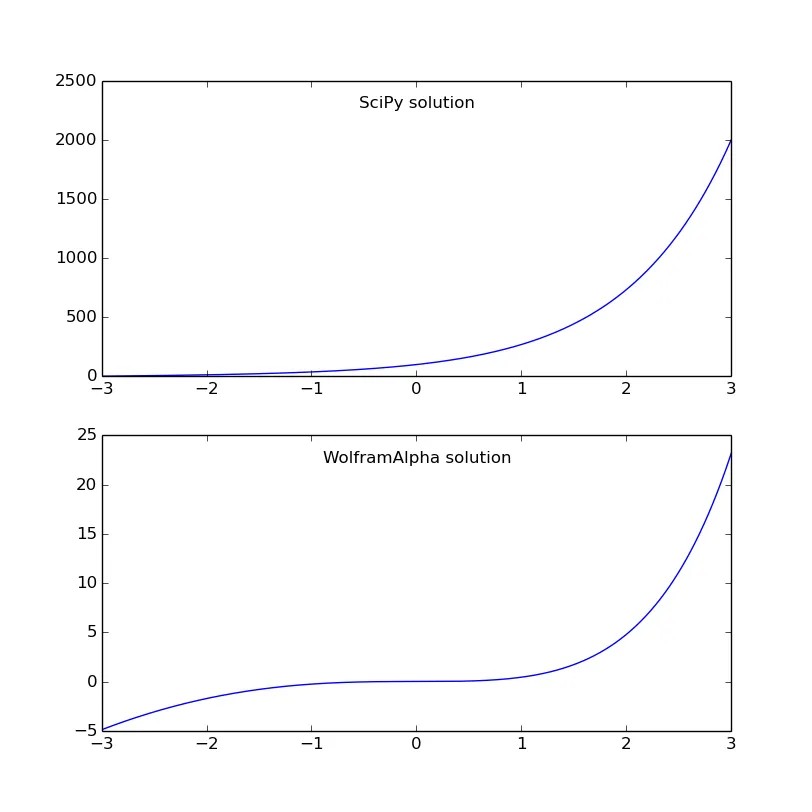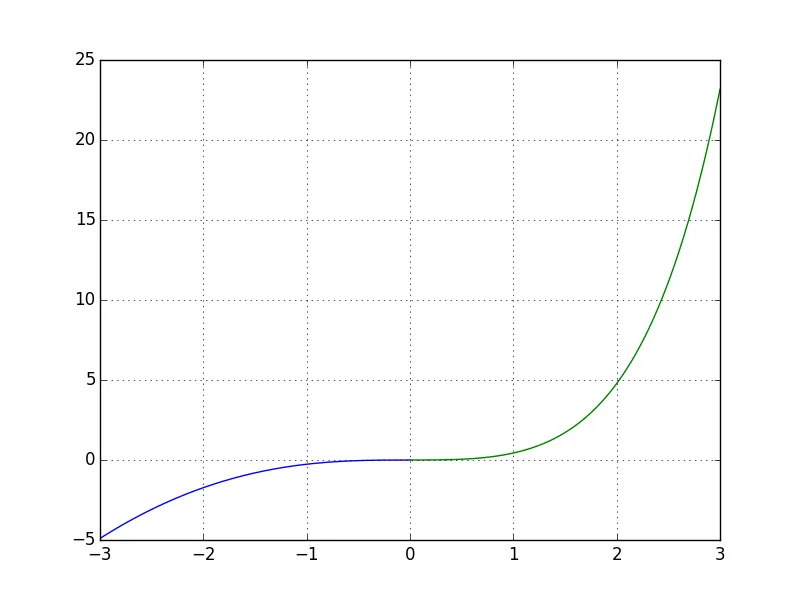我在应用 scipy.integrate.odeint 解决下面这个非常简单的ODE时遇到了困难:
y(t)/dt = y(t) + t^2 and y(0) = 0
由SciPy计算的解决方案不正确(很可能是因为我在这里混淆了什么),特别是该解决方案未满足初始条件。
import numpy as np
import scipy.integrate
import matplotlib.pyplot as plt
import math
# the definition of the ODE equation
def f(y,t):
return [t**2 + y[0]]
# computing the solution
ts = np.linspace(-3,3,1000)
res = scipy.integrate.odeint(f, [0], ts)
# the solution computed by WolframAlpha [1]
def y(t):
return -t**2 - 2*t + 2*math.exp(t) - 2
fig = plt.figure(1, figsize=(8,8))
ax1 = fig.add_subplot(211)
ax1.plot(ts, res[:,0])
ax1.text(0.5, 0.95,'SciPy solution', ha='center', va='top',
transform = ax1.transAxes)
ax1 = fig.add_subplot(212)
ax1.plot(ts, np.vectorize(y)(ts))
ax1.text(0.5, 0.95,'WolframAlpha solution', ha='center', va='top',
transform = ax1.transAxes)
plt.show()
1 : WolframAlpha: "求解 dy(t)/dt = t^2 + y(t), y(0) = 0"
我的 bug 在哪儿?

